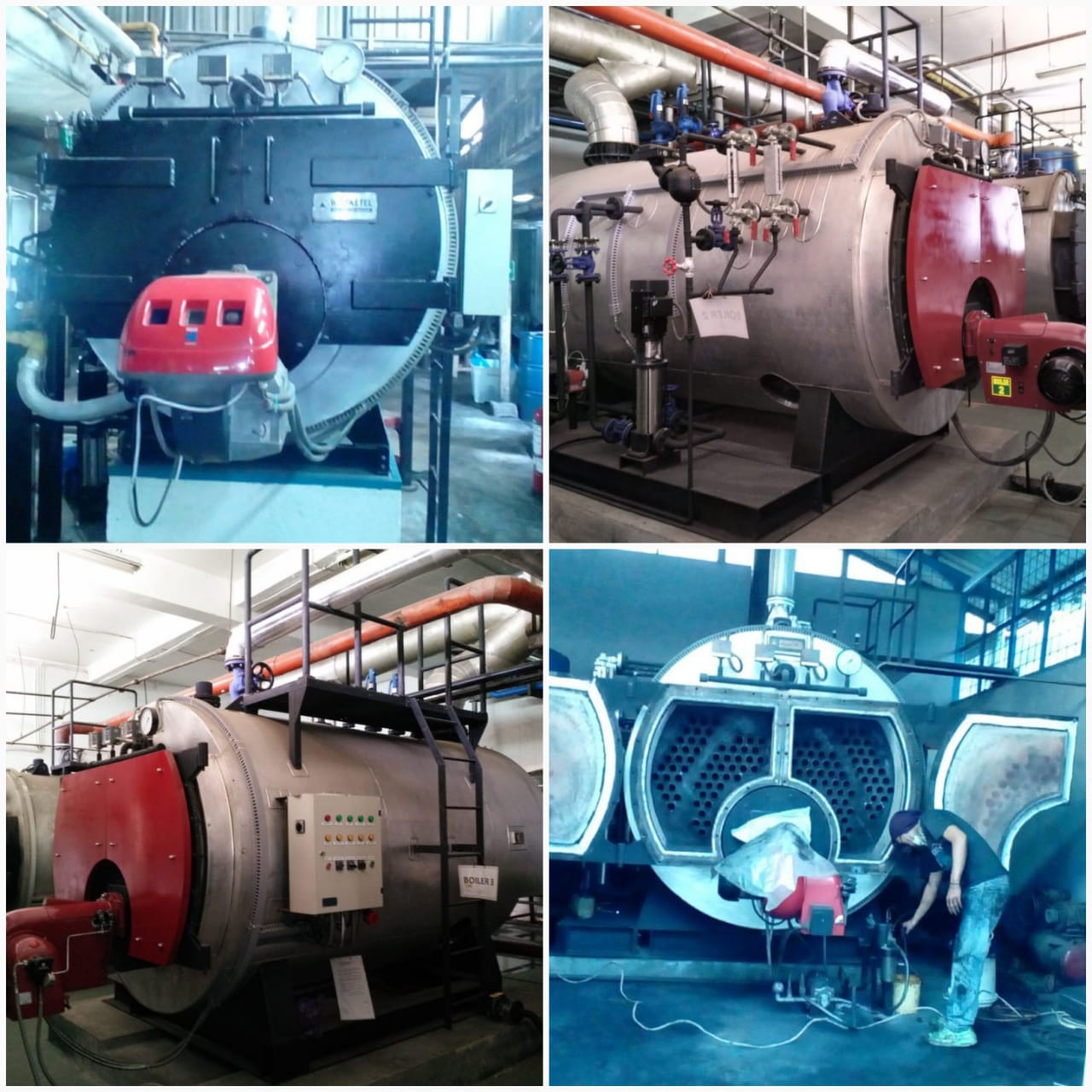Boiler Maintenance
Good maintenance of the boiler can guarantee a relatively long technical life and economic life. Below this is explained the ways to treat the boiler, if it is done more often, it guarantees the safe operation of the boiler.
Every 1 to 2 weeks:
– Check and clean the strainer (filter), water and steam.
– Check and clean pipes and flint walls of all the ash and burning crust attached to the wall.
– Checking the rotor (impeller) of the blower, especially the ID Fan blower impeller for the possibility of ash attached.
Every 1 to 3 months.
– Check and clean the outside and inside of the boiler.
– Clean the inside of all water tubes (pipes) and all headers and drums from scale (crust).
– Check the roster and replace it if there is a broken / damaged
– Cleaning all the ash from the chimney.
Above 1 year:
– Check and maintain the casing (wall)
– Check and maintain gas duct and dust collector.
– Check and maintain collector, equipment and instruments.
– Check and care for shells, cock and piping.
Every 2 years:
Every 2 years periodic checks are carried out witnessed by the local depnaker.
Damage Analysis and Maintenance of Oil Palm Plant Boilers for Efficiency Up to 90%
Before learning more about how to care for boilers and analysis of boiler damage, it needs to be understood in advance about the boiler and its working principle. Boilers include closed vessels, burning heat is flowed into the water until hot water or steam is formed. Hot water or steam at a certain pressure is then used to flow heat to a process. Water is a useful and inexpensive medium for delivering heat to a process. If the water is boiled to steam, the volume will increase by about 1,600 times, which is an equipment that must be managed and maintained very well. This component applies to any boiler, including palm oil mill boilers. If you want to do boiler maintenance, check the water and the engine. A good boiler maintenance is boiler maintenance that comes to water treatment.
The main component of the boiler
1. Drum Kettle:
– As “steam separators” and “purificators”.
– As a mixture of homogeneous water.
This component includes components that need to be checked when doing boiler maintenance.
2. The superheater is used to heat the saturated steam separately in the steam drum. In some parts the steam is only heated just above the saturation point where in other parts it may be heated to a significant temperature for additional energy storage. This superheater part is normally placed in a hotter gas stream, in front of the evaporator.
By visual inspection, the formation of crust on the outer and inner surface of the superheater pipe will inhibit heat transfer so that heat accumulates around the location. The occurrence of a superheater pipe breaks due to obtaining high and corrosive pressure around the pipe. In carrying out boiler maintenance, this component needs to be examined further.
For that you need a thorough examination and testing such as:
– Macroscopy
– Tensile and hardness testing
– Examination of chemical composition of materials.
– Examination of micro structures
– Check the composition of the crust
3. The economizer is used to preheat the feedwater before the steam is moved through the superheater or steam outlet and the water comes out through blowdown. In general, the economizer is placed in a cooler gas in the downstream evaporator. If you want to do boiler maintenance, check this economizer.
4. The evaporator is the part that functions to raise the water temperature to reach the boiling point. At the evaporator a phase change occurs from liquid to steam. If you want to do boiler maintenance, check the evaporator section.
5. Fuel
The fuel for palm oil mill boilers is fiber or shell. Fibers are solid fuels that are shaped like hair, if they have undergone a process of processing light brown color, these fibers are found in the second part of the oil palm fruit after the fruit husk of the oil palm. In the fibers and flesh of the fruit palm oil CPO oil is contained.
The amount of heat produced by fibers is smaller than that produced by the shell, therefore a greater proportion of fibers than the shell. In addition to fibers faster becoming ash when burned, excessive use of fibers will have a negative impact on the combustion process because it can inhibit the process of heat propagation in the water wall pipe, due to combustion ash that flies in the kitchen space and covers the water wall pipe, besides making it difficult to remove from expansion door (Exit for ash and charcoal) due to excessive buildup.
The boilers used in palm oil mills have the following specifications:
Steam Capacity: 20 Ton / hour
Steam Temperature: 2500C -2800 C
Steam Pressure: 20 kg / cm2
Feed water temperature: 90 ° C
Steam Boiler Efficiency: 75%
Fuel consumption: 75% fiber and 25% shell.
Operating conditions based on general data, boiler superheater pipes have a temperature of 250 ° C and a working pressure of 20 kg / m2 with fluid conditions flowing at high temperatures and pressures for a long time, then there will be degradation of the pipes due to heating, erosion also results in thinning of pipe thickness. In addition, the reaction between water vapor and pipes results in a deposit in the pipe, even if it operates for a long time it will cause a decrease in material properties. In the Superheater pipe it breaks, from the results of observations of the failure caused by a decrease in material strength due to the same operating conditions.
The outbreak of the Superheater pipe is due to operating at a high temperature (overheating) with the operating time
